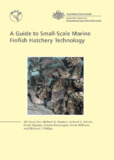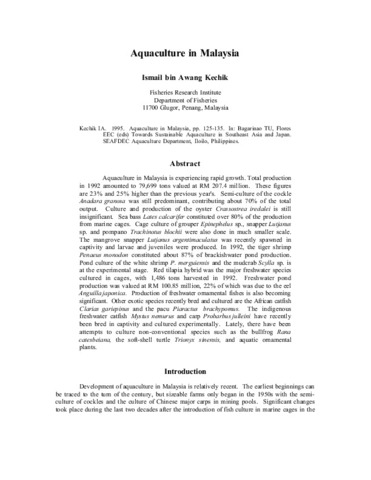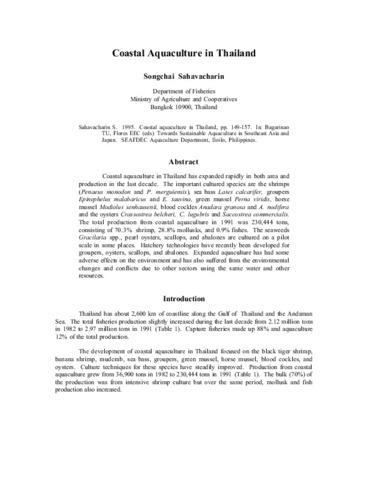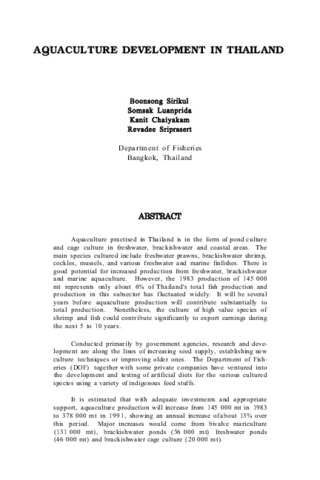A guide to small-scale marine finfish hatchery technology
Share
Abstract
Recent improvements in hatchery production technology for high-value marine finfish species such as groupers have led to an increased interest in setting up hatcheries to produce fingerlings for aquaculture. Small-scale hatcheries make this technology available to poor people in developing countries. Capital costs for small-scale hatcheries are relatively low, and the profitability of these ventures ensures rapid payback of capital investment.
This guide provides an outline of the requirements to establish a small-scale marine finfish hatchery, particularly the economic aspects. It is intended to provide sufficient information for potential investors to decide whether investment in such ventures is appropriate for them. The guide provides some basic technical information in order to give an indication of the level of technical expertise necessary to operate a small-scale marine finfish hatchery. However, it is not intended as a detailed technical guide to the operation of small-scale hatcheries. Additional resources, such as training courses in marine finfish hatchery production, are available and these are listed in this document.
Development of small-scale hatcheries may be more appropriate where there are existing marine hatchery operations, e.g. for shrimp or milkfish. By definition, small-scale hatcheries do not have broodstock facilities, so a supply of fertilised eggs (usually from a larger hatchery) is essential. Access to fertilised eggs and experienced hatchery staff will limit the application of small-scale hatchery technology. Despite this, there is considerable potential for this technology to be widely adopted.
This guide has been written by a team of experts in marine finfish aquaculture who have been involved in a multinational collaborative research project since 1999.
Suggested Citation
Sim, S. Y., Rimmer, M. A., Toledo, J. D., Sugama, S., Rumengan, I., Williams, K. C., & Phillips, M. J. (2005). A guide to small-scale marine finfish hatchery technology. Bangkok, Thailand: Network of Aquaculture Centres in Asia-Pacific. 17pp.
Subject
Collections
Related items
Showing items related by title, author, creator and subject.
-
Aquaculture in Malaysia
Kechik, Ismail bin Awang. (Aquaculture Department, Southeast Asian Fisheries Development Center, 1995)Aquaculture in Malaysia is experiencing rapid growth. Total production in 1992 amounted to 79,699 tons valued at RM 207.4 million. These figures are 23% and 25% higher than the previous year's. Semi-culture of the cockle ... -
Coastal aquaculture in Thailand
Sahavacharin, Songchai (Aquaculture Department, Southeast Asian Fisheries Development Center, 1995)Coastal aquaculture in Thailand has expanded rapidly in both area and production in the last decade. The important cultured species are the shrimps (Penaeus monodon and P. merguiensis), sea bass Lates calcarifer, groupers ... -
Aquaculture development in Thailand
Sirikul, Boonsong; Luanprida, Somsak; Chaiyakam, Kanit; Sriprasert, Revadee (Aquaculture Department, Southeast Asian Fisheries Development Center, 1988)Aquaculture practised in Thailand is in the form of pond culture and cage culture in freshwater, brackishwater and coastal areas. The main species cultured include freshwater prawns, brackishwater shrimp, cockles, mussels, ...





